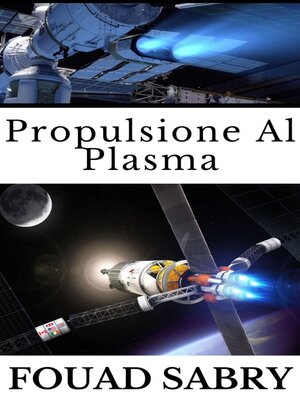Propulsione Al Plasma
ebook ∣ SpaceX può utilizzare la propulsione al plasma avanzata per le astronavi? · Tecnologie Emergenti Nel Settore Aerospaziale
By Fouad Sabry

Sign up to save your library
With an OverDrive account, you can save your favorite libraries for at-a-glance information about availability. Find out more about OverDrive accounts.
Find this title in Libby, the library reading app by OverDrive.



Search for a digital library with this title
Title found at these libraries:
| Library Name | Distance |
|---|---|
| Loading... |
What Is Plasma Propulsion
A SpaceX Starship powered by chemical methylox engines will take up to six months to reach Mars. On Earth, radiation exposure is less than 2.5 milliseiverts per year. On their approach to Mars, colonists will face levels 300 times higher than that. Can we use superconducting advanced plasma propulsion technologies to cut the time down to 30 days? Neutron Star Systems has developed an improved magnetoplasmadynamic thruster system that uses rare earth barium copper oxide high temperature superconducting electromagnets to significantly improve plasma propulsion performance while consuming less electricity. This could be the way of the future for spaceflight propulsion.
Technically, there are two types of propulsion systems namely chemical and electric depending on the sources of the fuel. Electrostatic thrusters are used for launching small satellites in low earth orbit which are capable to provide thrust for long time intervals. These thrusters consume less fuel compared to chemical propulsion systems. Therefore for the cost reduction interests, space scientists are interested to develop thrusters based on electric propulsion technology.
Can SpaceX use Advanced Plasma Propulsion for Starship?
How You Will Benefit
(I) Insights, and validations about the following topics:
Chapter 1: Plasma Propulsion Engine
Chapter 2: Spaceflight
Chapter 3: Wingless Electromagnetic Air Vehicle
Chapter 4: Electrically Powered Spacecraft Propulsion
Chapter 5: Ion thruster
Chapter 6: Stellarator
Chapter 7: Electric sail
Chapter 8: MagBeam
Chapter 9: Spacecraft propulsion
Chapter 10: Advanced Electric Propulsion System
Chapter 11: Anti-gravity
Chapter 12: Artificial gravity
(II) Answering the public top questions about plasma propulsion.
(III) Real world examples for the usage of plasma propulsion in many fields.
(IV) 17 appendices to explain, briefly, 266 emerging technology in each industry to have 360-degree full understanding of plasma propulsion' technologies.
Who This Book Is For
Professionals, undergraduate and graduate students, enthusiasts, hobbyists, and those who want to go beyond basic knowledge or information for any kind of plasma propulsion.







